The hidden treasure
Discover the ancient technique of memory palaces and never forget anything again
Bálint Gáspár
4/1/20237 min read
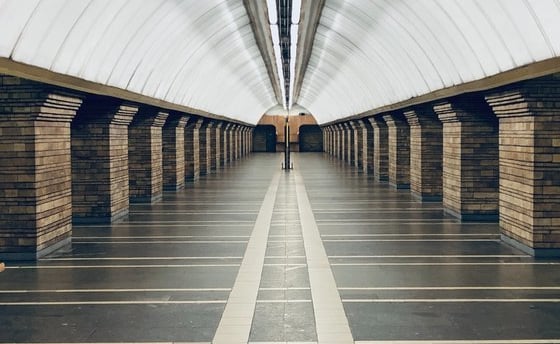

When I started to write this blog post, my first thought was, how good it is for people, who haven't heard anything about memory palace yet, because they still have so much to experience. Do you know that feeling, when you show one of your favourite movies to a friend and you are low-key jealous of him / her for seeing the movie for the first time?
Exactly this is what I feel, when I tell people about memory palace. I heard about the concept, I tried and it worked right away. There is no need for extensive practice. Of course you will be better and better with time, but you can have success from the very beginning. In fact, I encourage you to try this method right after reading this article. It only takes a couple of minutes to try, and you can experience its efficiency in a heartbeat. And I am pretty proud of spreading the word too.😉
Let's see the concept in a nutshell :The memory palace, or method of loci, is a mnemonic technique that involves associating information to be remembered with specific physical locations. It is based on the brain's natural ability to process and remember visual and spatial information. This technique is thought to have evolved from the survival skills of our hunter-gatherer ancestors who relied on their spatial memory to navigate and remember important locations. By linking new information to a familiar and easily visualized location, the brain creates strong and lasting associations that make it easier to recall the information later on.
I suggest you experience with a location you are extremely familiar with, like your childhood home. You know every corner of the house or flat you lived in for years, your spatial memory has just been more developed over the thousands of years than any other type of memory you have, which means you need close to zero cognitive cost to remember the order of new materials. However there is a crucial caveat. In some cases the order of new information is critical, in other cases it helps the workflow and in other cases again is completely irrelevant. Let me give you an example for each. When you are working in Photoshop, there are steps, which are constant, in this case it's critical to know the right order of the steps, on the other hand if you have a presentation a memory palace makes the whole speech, smooth and effortless. And the last case is for example when you learn the most frequent vocabulary of your target language, in this scenario the order of words is entirely insignificant. I do not recommend that you start using this technique without a second thought. Always ask yourself whether the order of information is necessary.
I have learned the most frequent 4000 Spanish words with this technique and it was pretty fun, but also took a ton of cognitive energy I could have used better. All things considered I do not recommend for learning vocabulary, you can master the method in a couple of days so it would be a total waste of time. But in any other cases when you think it could be helpful, it's like a magic trick.
The order what you have already memorised is the order of the rooms. If we wanna see this purely pragmatic, the only thing we need is a well-known order. Because memory palace is only for learning things in a specific order for different reasons. It can also be simply a matter of wanting to check the words, to make sure we don't miss any. For example when you want to learn 10 new words, you link those words to 10 rooms/ stations of your childhood home, so it is hard to skip the bathroom while you are mentally roaming through the rooms, which means it is hard to miss that word you put in the bathroom when you are reciting the words. With this in mind, the only thing you need is a well-known order. This could be a metro line, whose stations you can perfectly recall. Okay, it is also somewhat spatial if you know the stations on the surface, but not in the strict sense.
At this point we have arrived to mnemonics. Mnemonics are memory aids that create associations between new information and existing knowledge or memories. By engaging multiple senses and using creative and memorable associations, mnemonics can help you remember information more easily and efficiently, making them a valuable tool for enhancing memory and recall. I have written before about how connecting a new memory to a very strong old memory changes what it looks like in practice. It is exactly the same rule why we create multiple cards around one word. The new memory is woven into an already existing memory, making it almost unbreakable, unforgettable. Can you see the difference between one memory and a cluster of them?
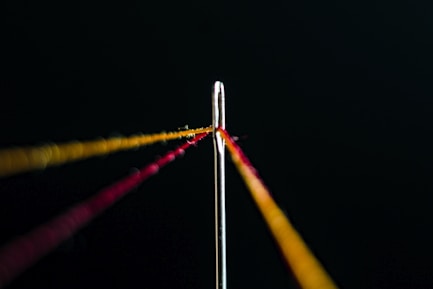
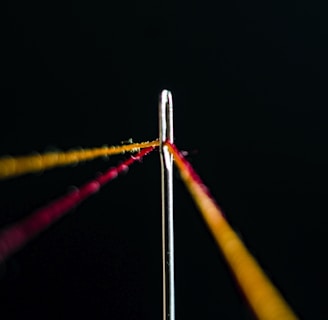


Visualization
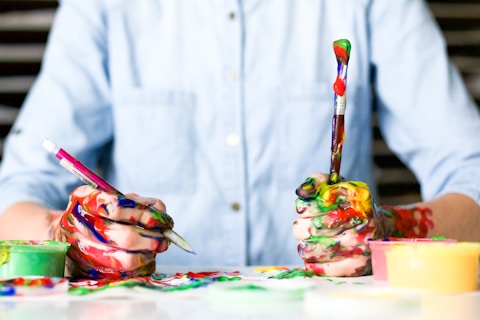
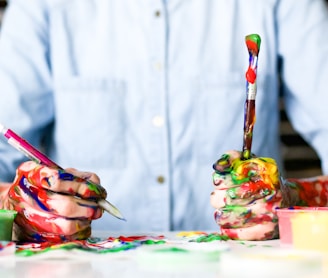
Our spatial memory is already in operation but we still have another tool to make our memories more memorable and this is our imaginary. As I wrote earlier, the brain tends to be energy-efficient, which means, it forgets everything that has no particular reason to be stored. So let's see how we create a memorable cartoon of a boring grocery list.
Let's say you need to remember a list of grocery items, which includes eggs, bread, milk, and bananas. To remember these items using a memory palace, you could imagine a familiar place, such as your childhood home, and mentally place each item in a different location within that space.
For example, you could imagine walking through the front door of your childhood home and seeing a large basket of eggs sitting on the hallway table. You could then visualize walking into the kitchen and seeing a loaf of bread sitting on the counter. Next, you could imagine opening the refrigerator and seeing a carton of milk on the top shelf. Finally, you could picture walking into the living room and seeing a bunch of bananas sitting on the coffee table. All right, this was the boring, dull version of the story, let's spice it a little bit up. 🪄
Imagine that as you walk through the front door of your childhood home, you're suddenly shrunk down to the size of a mouse! You waddle over to the hallway table, where you find not just a large basket of eggs, but a giant, mutant egg that starts to crack open before your very eyes. Out pops a tiny, animated chicken, clucking away and wearing a tiny hat and sunglasses!
You scamper into the kitchen, where you find not just a loaf of bread on the counter, but a loaf of bread that's grown sentient and sprouted arms and legs! The bread starts dancing around the kitchen, singing a catchy tune about the joys of being bread.
You open the refrigerator, and instead of a plain old carton of milk, you find a cartoon cow named Bessie, complete with a friendly smile and a mooing voice. Bessie starts chatting with you about her adventures on the farm, and even offers to give you a ride on her back.
Finally, you make your way into the living room, where you find a bunch of bananas...that have grown arms and legs and are running around the room like crazy! They're throwing banana peels everywhere, slipping and sliding around, and causing all sorts of chaos. One banana even starts tap dancing on the coffee table!
We can take another practical, everyday example. I always go through this imaginary tour before I hit the gym. In this case the memory palace acts like an inventory, the order is only important so that no item is forgotten from the list. Let's see first the list then the story.
1. slippers - hall
2. underwear/socks - in my room
3. water bottle- toilet
4. protein and shaker- bathroom
5. towel- kitchen
6. key- living room
7. mask- my brother's room
8. t-shirt/short - parents room
9. shoes- balcony
Your slippers in the hallway have sprouted wings and are now flying around your head, chirping away like cheerful birds. You hop on their backs and they take you straight to your room, where you find your underwear and socks bouncing around like crazy on your bed. They've teamed up with a rebellious sock puppet who's wearing a pirate hat and brandishing a tiny sword!
Next up is the water bottle, which has grown legs and is now hopping around on the toilet like it's doing a silly dance. The protein powder and shaker bottle have teamed up to become a dynamic duo, spinning around like superheroes and yelling out motivational quotes to get you pumped up.
As you head to the kitchen for your towel, you find that it's now a massive, fluffy creature with a mind of its own. It starts chasing you around the room, trying to give you a big slobbery hug!
Your flat key is now a tiny, adorable puppy, wagging its tail and eagerly following you around. The only problem is, it keeps trying to chew on your shoelaces!
In your brother's room, you find a mysterious figure wearing a mask and playing video games. It turns out to be your trusty workout buddy, who offers to join you for a session at the gym.
Finally, you head to your parents' room and find your t-shirt and shorts have transformed into a funky disco outfit. You put them on and start grooving to the beat, before heading out to the balcony to find your shoes. They've grown to giant size and are now tap dancing away like a Broadway star!
Let's recap the science behind the story: we use our spatial memory to utilize a well-known order and we strengthen the memory with zany, goofy, cartoonish, funny, thus memorable imaginary.
Another useful way to utilize memory palace is memorizing table of contents. You just place those 10-20 chapters in your memory palace and you can easily go through the book,
Conclusion
In conclusion, the memory palace technique is a highly effective way to enhance memory and recall. By associating new information with specific locations in a familiar setting, the brain creates strong and lasting associations that make it easier to remember the information later on. But, please, please, please consider the relevance of the order of information to decide whether to use this technique, as it may not always be necessary. Just like in my case with the most frequent 4000 words. 😅 Additionally, using mnemonic devices, such as imagination and visualization, can further enhance the effectiveness of the memory palace technique. Overall, trying out the memory palace technique can be a fun and rewarding experience, and it is definitely worth giving it a go to see how it can improve your memory skills.
Make it stick!
I understand that it might seem overwhelming at first, but don't worry, you don't have to understand everything right away. I believe, it's important to have a good understanding of something in order to really learn it well, especially when it comes to complex concepts (and trust me, it's going to be complex!). That's where the power of time comes in. Sometimes all you need to do is take some time to break it down, read and digest the information, and then take a break. After that, you can come back to it and re-read, applying your new experience to the concept. You can keep doing that, re-reading and tweaking until you really get a handle on it and feel confident in your understanding. It might take some time and patience but you can do it! 💪
I might layout a concept starting with idea A, then move on to B, then C, and then D. But, everyone's brain works differently, and for you, it maybe makes more sense if we start with B, then talk about A, then move on to C, go back to A again, and then finish with D. That way, your brain can make better sense of the information and make more connections.
I highly recommend downloading the free app and saving the link to this blog post in your schedule. This is because I genuinely believe it will be helpful for you and I truly care about your success. By saving the link and accessing it through the app, you can review the information whenever you have a spare moment and reinforce your understanding. It's a small step, but it can make a big difference in your learning journey. So please, take my advice to heart and give it a try!
Stay in the game, there are many more articles to come! 😉